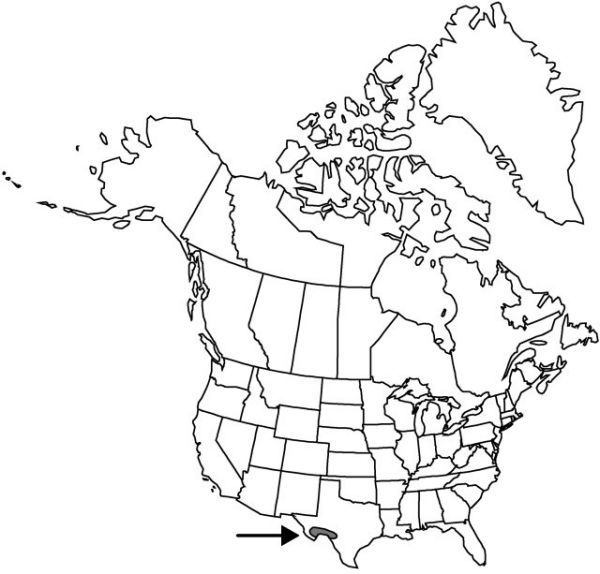Yucca thompsoniana
Rep. (Annual) Missouri Bot. Gard. 22: 101, plates 104–107. 1911.
Plants solitary or forming colonies of rosettes, caulescent, arborescent, mostly asymmetrical, 0.7–2.5 m, not including inflorescence, to 30 cm diam.; rosettes each with more than 100 leaves. Stems 1, erect, 1–3-branched. Leaf-blade linear, flat or concavo-convex or slightly keeled, widest at or above middle, 20–30 (–45) × 0.7–1.2 cm, flexible, ± scabrous adaxially and abaxially, margins denticulate, yellow or orangish red, corneous, apex sharp-pointed. Inflorescences paniculate, racemose at apex, arising beyond rosettes, 5–8 dm; branches to 2 dm; bracts erect, 10–13 (–17) cm; peduncle sometimes scapelike, (0.3–) 0.4–0.7 m, 1.3–2 cm diam., glabrous or glabrescent. Flowers pendent; perianth globose to campanulate; tepals distinct, white, narrowly elliptic, 3.5–6.5 × 1.2–3.5 cm, glossy, apex sharply acuminate; filaments 1.7–3.3 cm; pistil 2.5–3.8 × 0.4–0.8 cm; style white, 6–18 mm; stigmas lobed. Fruits erect, capsular, dehiscent, ovoid, rarely constricted, 3.5–7 × 2–2.5 cm, dehiscence septicidal. Seeds dull black, thin, 6–8 mm diam.
Phenology: Flowering spring.
Habitat: Rocky slopes and hills
Elevation: 200–1400 m
Distribution

Tex., n Mexico (Chihuahua), n Mexico (Coahuila)
Discussion
Yucca thompsoniana occurs in the trans-Pecos area of Texas. J. M. Webber (1953) characterized it as a dwarflike form of Y. rostrata, and the differences are perhaps not sufficient to merit separate recognition. Webber also suggested that it may hybridize with Y. reverchonii.
Selected References
None.
Lower Taxa
"thick" is not a number. "thin" is not a number."dm" is not declared as a valid unit of measurement for this property."dm" is not declared as a valid unit of measurement for this property. "dm" is not declared as a valid unit of measurement for this property."thin" is not a number.